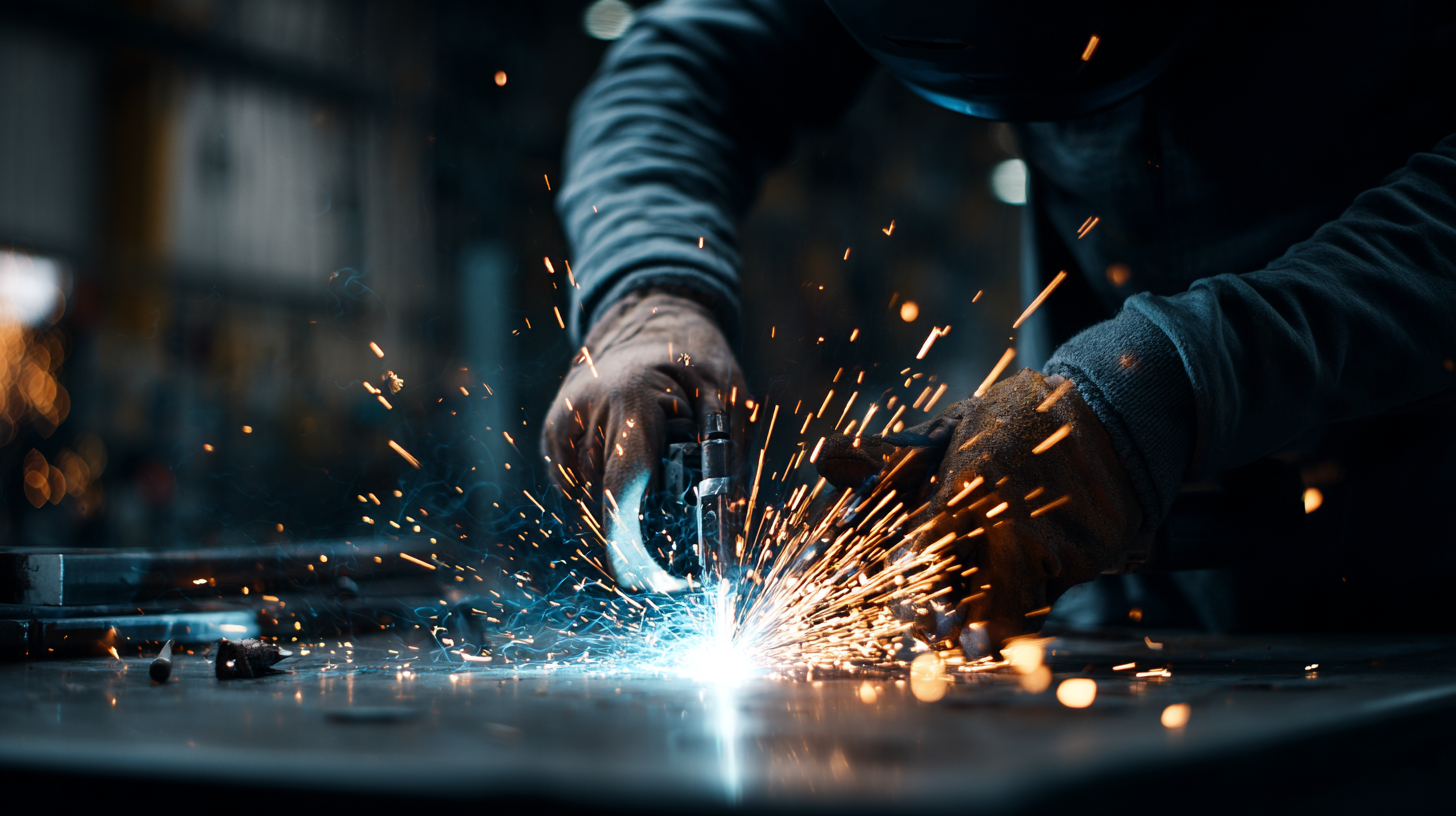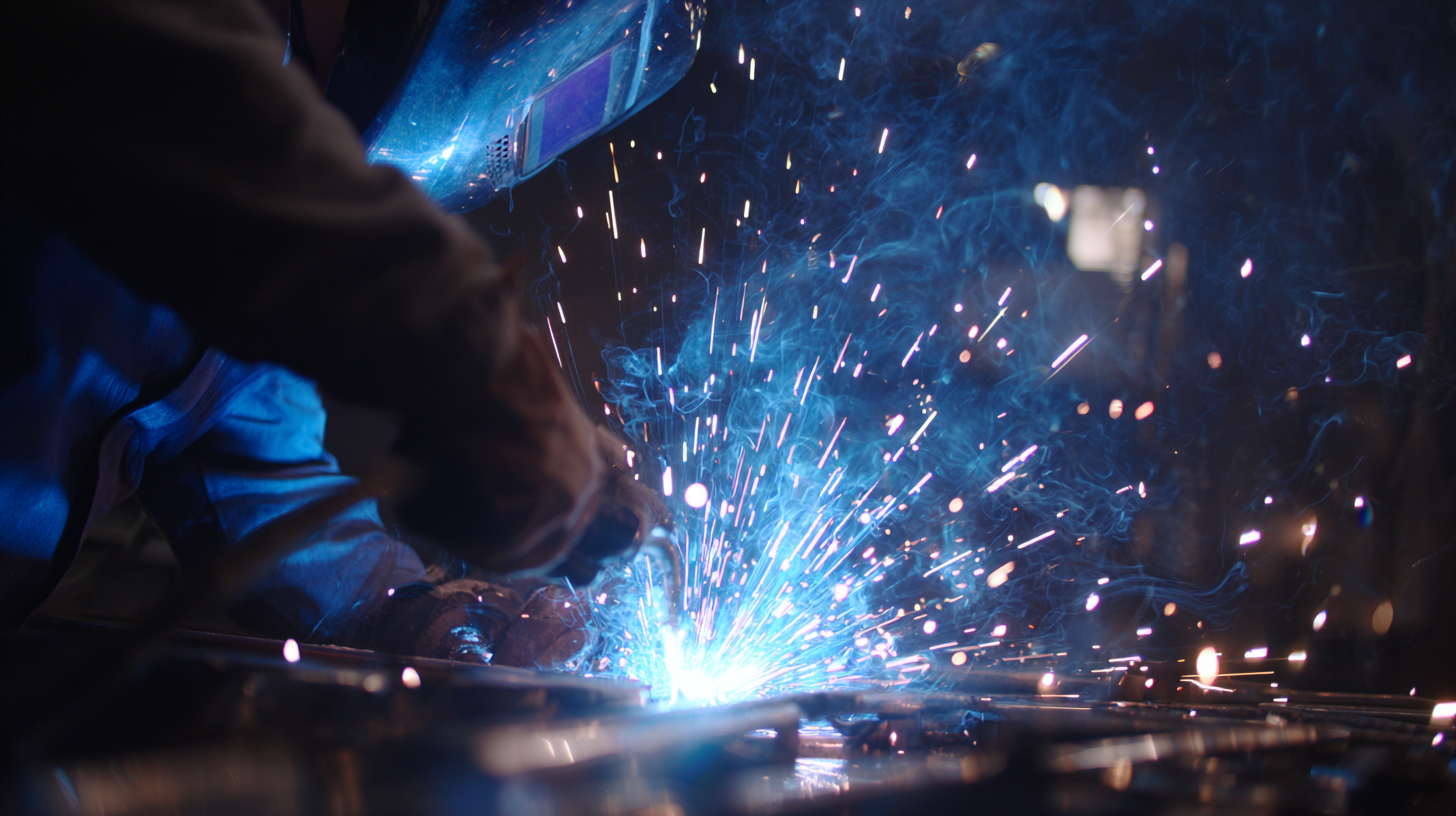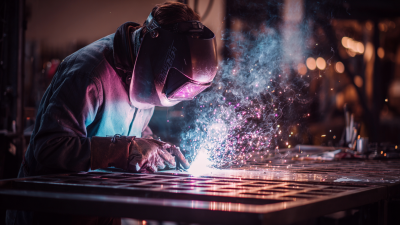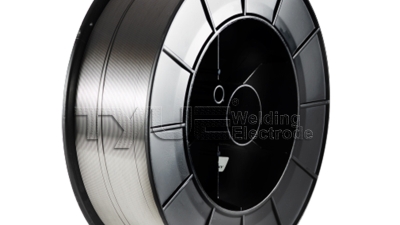Exploring Alternative Solutions to Flux Core Welding for Global Buyers
Table of Contents
- Understanding the Limitations of Flux Core Welding in Various Applications
- Identifying Alternative Welding Technologies: Pros and Cons
- Key Factors Driving Global Buyers to Explore Alternative Solutions
- The Role of Digital Innovations in Enhancing Welding Efficiency
- Comparative Cost Analysis: Flux Core Welding vs. Alternative Methods
- Case Studies: Successful Implementation of Alternative Welding Solutions
- Maximize Your Welding Efficiency with AWS A5.20 E70T-7 Flux Cored Arc Welding Electrodes
- FAQS
- Conclusion
- Related Posts
In today’s rapidly changing welding world, staying on top of new innovations and alternative methods is pretty much essential to meet the diverse needs of customers all over the globe. You’ve probably heard of Flux Core Welding – it’s been a go-to choice for its efficiency and ability to weld comfortably even in windy conditions. It’s a staple in a bunch of industries, from construction to manufacturing. Recent reports say the global welding market could hit around $20 billion by 2025, thanks to tech advancements and rising demand across various sectors. That said, not everything's perfect—issues like spatter and cleanup after welding often push folks to look for better solutions. That’s where Wenzhou Tianyu Electronic comes in. Founded back in 2000, this company has been leading the way in making top-notch welding electrodes and consumables for over 22 years. They offer a wide range of options—stainless steel, carbon steel, low alloy electrodes—giving welders solid choices to tackle modern challenges, including those associated with Flux Core Welding.

Understanding the Limitations of Flux Core Welding in Various Applications
Flux core welding has really made its mark in a bunch of industries because it’s pretty efficient and versatile. Still, it’s important for buyers around the world to understand where it might fall short if they want the best welding results. According to the American Welding Society, for example, FCAW (that’s flux-cored arc welding) works great outdoors and when you’re dealing with thick materials. But, on the flip side, it can be a bit messy—lots of spatter, which means more cleanup and potentially slowing you down. Actually, the report mentions that nearly a quarter of welders—about 25%—find spatter to be a real pain during their work.
On top of that, if you’re working on projects that need precision or detailed work, FCAW might not be your best bet. The National Center for Welding Education and Training points out that for thinner metals or complex assemblies, techniques like MIG or TIG welding tend to give you better accuracy—about 30% better, in fact, compared to FCAW. That means more rework and higher costs if you choose the wrong method. So, it really pays to think carefully about whether flux core welding matches your specific project needs. As industries keep changing and developing, it’s smart to explore different welding options to keep your quality high and your efficiency on point.
Identifying Alternative Welding Technologies: Pros and Cons
When you start thinking about alternatives to flux core welding, a few different options pop up, each with its own set of perks and quirks. One pretty popular choice is MIG welding— that’s the Metal Inert Gas stuff. It uses a continuous wire and a shielding gas, which makes it super fast and efficient. That’s great if you’re working on big projects or need to get things done quickly. But, heads up—outdoors, it might struggle a bit. Wind can blow the shielding gas away, which isn't ideal for weld quality.
Then there’s TIG welding, which folks really love for its precision. You can get some really high-quality, detailed welds with TIG, especially on thinner stuff. The trade-off? It’s a bit slower, and it takes some practice to get the hang of it. Plus, it’s not exactly what I’d call beginner-friendly, especially if you’re in a rush to finish a job. Figuring out which of these options works best really depends on what you need, especially if you’re a buyer trying to make the most of your welding projects.
It’s all about weighing the pros and cons—getting the mix right for your specific situation.
Key Factors Driving Global Buyers to Explore Alternative Solutions
Lately, more and more buyers around the world are looking for alternatives to flux core welding, and there are a few solid reasons behind that. First off, cost savings are a big deal — everyone’s trying to cut down production expenses without sacrificing quality. Traditional flux core welding can rack up extra costs, especially when it comes to materials and cleanup afterward. So, folks are exploring other options like MIG or TIG welding, which often give a cleaner finish and can save on consumables in the long run.
Another thing that’s driving this trend is the need for more versatile welding methods. Many international buyers need solutions that can handle different kinds of materials and thicknesses. Techniques like laser welding are gaining popularity because they offer great precision and faster results. Plus, with the industry really leaning toward greener practices, people are becoming more aware of how their welding choices impact the environment. That’s pushing them to look into options that produce fewer emissions and generate less waste.
**A couple of tips:** When you’re checking out alternative welding methods, think about the long-term costs—not just the upfront investment. Make sure the technique fits your specific projects. And don’t be shy about reaching out to suppliers—they can offer valuable advice on material compatibility and best practices. Also, stay updated on new tech developments because they could really boost your productivity and efficiency over time.

The Role of Digital Innovations in Enhancing Welding Efficiency
Hey, in today's world of high-tech manufacturing, digital innovations are really shaking up the welding industry—especially for buyers around the globe who are looking for alternatives to the usual flux core welding. Things like automation, virtual reality, and AI-driven solutions are making welding faster and better in terms of quality. The latest report points out that machines with digital twin tech can actually boost how precise welding is and help streamline the whole process, which means less time and material wasted—pretty awesome, right?
One game-changer is these new virtual reality training simulators. They’re totally transforming how people learn welding. Instead of just reading about it or practicing on actual parts right away, newbies can get hands-on experience in a safe, controlled setting. It’s not only helping new welders get better faster but also making operations safer and more efficient. Industry folks say that companies putting money into digital training platforms see up to a 30% jump in their teams’ skills within just the first year—that’s pretty significant.
Tip: When you're thinking about different welding options, it’s worth looking into how digital tech can fit into what you're already doing. It could give your productivity a real boost and cut costs down.
And on the innovation front, hybrid welding processes are gaining traction. These combine different techniques to improve how well joints are penetrated and the overall strength of welds. Research shows that mixing these methods can bump up productivity by about a quarter, helping manufacturers create sturdy products without sacrificing quality.
Tip: Make sure to keep an eye on the latest welding tech and maybe even team up with R&D-focused organizations. That way, you can take advantage of new developments and keep your business ahead of the curve.
Comparative Cost Analysis: Flux Core Welding vs. Alternative Methods
 When it comes to welding, flux core welding (FCW) has pretty much been the go-to for many folks because it’s efficient and super versatile. But as the industry keeps evolving, more and more buyers are starting to look into other options like MIG (Metal Inert Gas) and TIG (Tungsten Inert Gas) welding. I came across a recent industry report that points out while flux core welding might cost around $1.00 to $1.50 per pound of filler material, MIG and TIG often come in a bit cheaper — somewhere between $0.70 and $1.20 per pound. So, there’s definitely a potential cost benefit there if you switch things up.
When it comes to welding, flux core welding (FCW) has pretty much been the go-to for many folks because it’s efficient and super versatile. But as the industry keeps evolving, more and more buyers are starting to look into other options like MIG (Metal Inert Gas) and TIG (Tungsten Inert Gas) welding. I came across a recent industry report that points out while flux core welding might cost around $1.00 to $1.50 per pound of filler material, MIG and TIG often come in a bit cheaper — somewhere between $0.70 and $1.20 per pound. So, there’s definitely a potential cost benefit there if you switch things up.
That said, when you're trying to pick the best method, it’s not just about the price of the filler wire. You’ve gotta think about how efficient each method is and whether it’s a good fit for your specific project. For example, FCW works really well outdoors, especially in windy or dusty conditions. On the other hand, MIG produces cleaner welds, making it more suitable for indoor jobs where a neat finish counts. And if you need to work on thin materials that require a lot of control, TIG is awesome — though it tends to cost about 20% more in operational expenses compared to FCW.
Quick tip: Take a good look at what your project really needs before choosing your welding method. If you’re working with heavy materials or outdoors, flux core might still be the way to go. But if you’re after precision and a clean look indoors, it might be worth investing in MIG or TIG — they might cost a little more upfront, but the results and efficiency can really make a difference.
Case Studies: Successful Implementation of Alternative Welding Solutions
When it comes to finding better ways to weld more efficiently, lots of industries are starting to explore alternatives to that old-school flux core welding. For example, I came across a manufacturing plant that made a big switch to laser welding tech. And honestly, the results were pretty impressive! They managed to beef up the quality of their welds and speed up production at the same time. The cool thing about laser welding is how precise it is—allowing them to weld thinner materials without much distortion, which meant they used less material overall and created less waste. So, not only did they slash their operational costs, but they also boosted their sustainability game.
And there’s another story worth mentioning: a shipbuilding company that moved over to automated welding systems. It made a massive difference! Not only did it make their welding process more streamlined, but it also improved the consistency and safety of their welds—especially across those huge ship structures. The automation meant fewer mistakes from humans, and they even added some fancy monitoring systems to make sure every weld hit strict quality standards. The results? They were finishing projects faster, and their workers felt more motivated because they could focus on more skilled, less routine tasks. These examples really show how trying out different welding approaches can bring surprisingly big benefits, especially for companies looking to optimize their manufacturing processes worldwide.
Maximize Your Welding Efficiency with AWS A5.20 E70T-7 Flux Cored Arc Welding Electrodes
Maximizing welding efficiency is crucial in today’s fast-paced industrial environment, and choosing the right materials is essential for achieving that goal. The AWS A5.20 E70T-7 Flux Cored Arc Welding Electrode stands out as an excellent choice for welders seeking high penetration and performance. Designed specifically for self-shielded flux cored welding, the E70T-7 facilitates improved efficiency and versatility across various applications.
The unique formulation of the E70T-7 wire allows for effective welding in flat, horizontal, and downhill positions while utilizing DCEN polarity. This makes it ideal for a range of projects, from structural steel fabrication to general repair work. Its high deposition rate and excellent bead appearance not only speed up the welding process but also contribute to stronger welds that are less prone to defects.
By incorporating AWS A5.20 E70T-7 into your welding operations, you can enhance productivity without sacrificing quality. This electrode offers welders the ability to tackle thicker materials with ease, ensuring that you can meet the demands of even the toughest jobs. Whether you are a seasoned professional or just starting, investing in high-quality welding consumables like the E70T-7 is a step toward maximizing your welding efficiency.
FAQS
: MIG welding offers speed and efficiency, making it suitable for large-scale production.
Yes, wind can interfere with the shielding gas used in MIG welding, compromising weld quality.
TIG welding is known for producing high-quality, precise welds, allowing for intricate work on thinner materials.
TIG welding has a slower welding speed and a steeper learning curve, which makes it less accessible for beginners or quick production environments.
Flux core welding costs around $1.00 to $1.50 per pound of filler material, while MIG and TIG techniques range from $0.70 to $1.20 per pound, indicating a potential cost advantage for the alternatives.
Flux core welding is preferred for heavier materials and outdoor settings due to its efficiency and versatility.
MIG welding is ideal for indoor applications where cleaner welds are required.
TIG welding has a higher operational cost, approximately 20% more than flux core welding.
Buyers should assess their project requirements carefully, considering material costs, efficiency, and application suitability.
Evaluating the pros and cons is essential for global buyers to meet their specific welding needs efficiently and effectively.
Conclusion
So, I came across this blog called "Exploring Alternative Solutions to Flux Core Welding for Global Buyers" — and honestly, it sheds some light on the limitations of Flux Core Welding across different applications. It really gets you thinking about why people might be on the lookout for other welding options. The article breaks down the pros and cons of various methods, pointing out stuff like efficiency, costs, and the latest tech advances that influence what buyers worldwide tend to choose. It’s pretty clear that digital innovations are playing a big role in boosting welding processes—especially as industries are all about bumping up productivity and cutting down expenses.
They also did a solid cost comparison between Flux Core Welding and some alternative methods, which gives manufacturers some serious insights on how to streamline their operations. Plus, there are case studies showing real-world examples of companies successfully using different welding solutions—kind of inspiring to see what’s possible with new tech. And I should mention, with over 20 years of experience under their belt, Wenzhou Tianyu Electronic Co., Ltd. really knows their stuff when it comes to helping buyers navigate these options, offering top-notch welding electrodes and consumables.
All in all, it’s a well-rounded look at where welding technology is heading and what tools are out there for global buyers trying to stay ahead of the game.
Related Posts
-

Innovative Solutions for Enhancing Your Stainless Mig Welding Efficiency
-

How to Utilize the Best Tungsten Electrode for Sustainable Welding in 2025
-

7 Reasons Why Best Stainless Steel Mig Wire Is Essential for Your Welding Projects
-

Exploring the Advantages and Applications of the Top Welding Electrode Types
-

Top Strategies for Selecting the Best Electrode Metal for Your Industrial Needs
-

7 Reasons Why Best Metal Braze Is Essential for Optimal Manufacturing Efficiency
Blog Tags:


